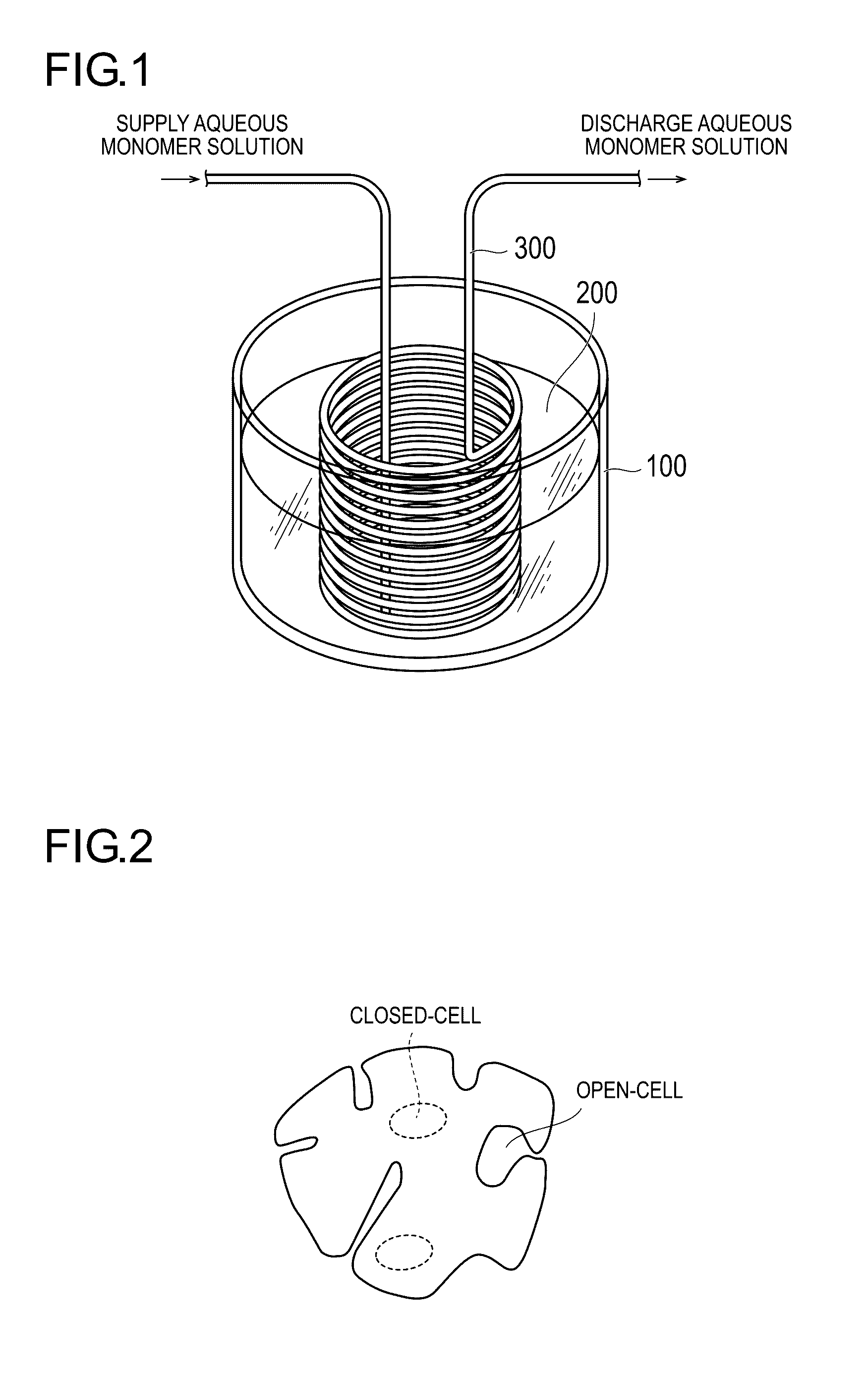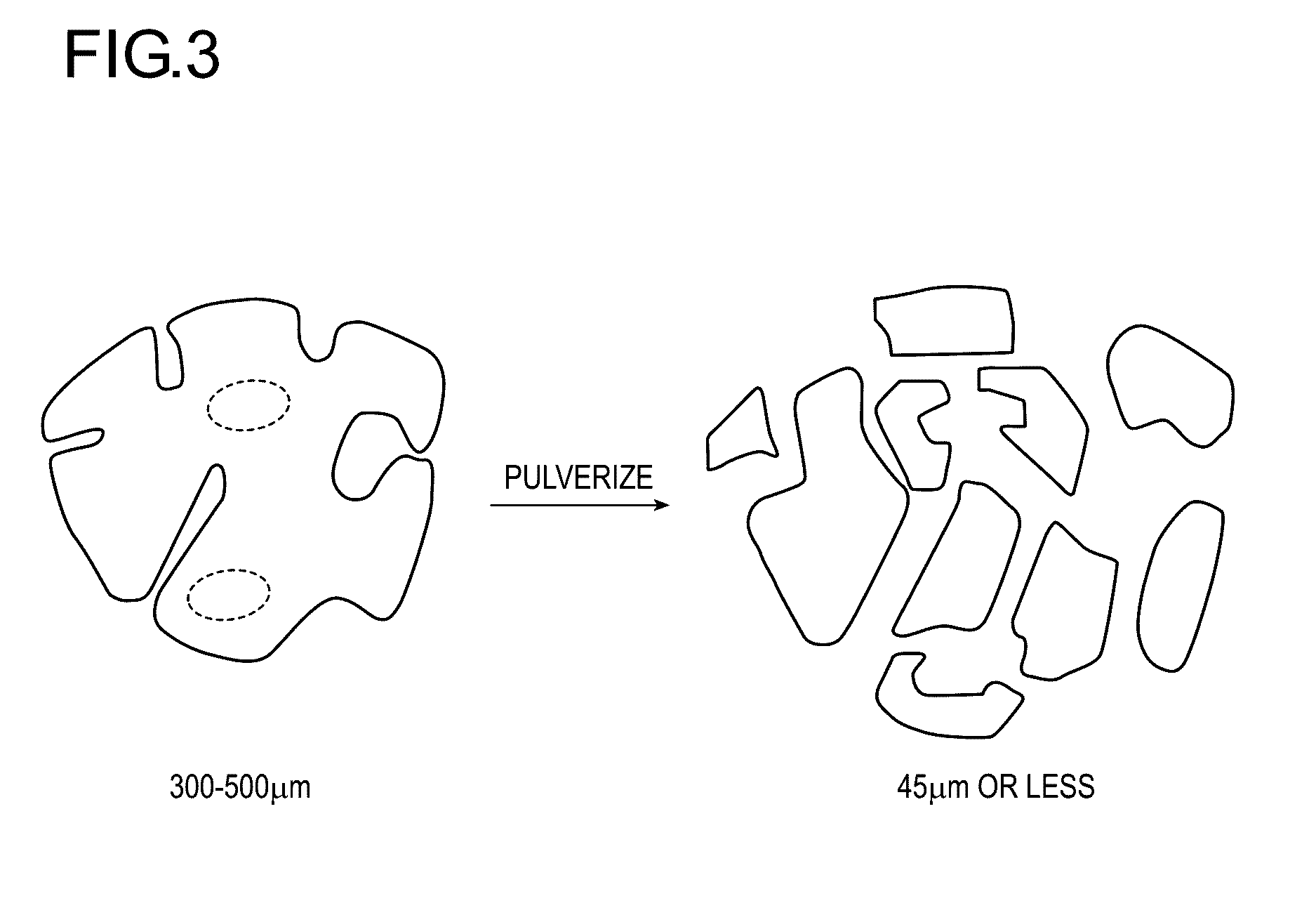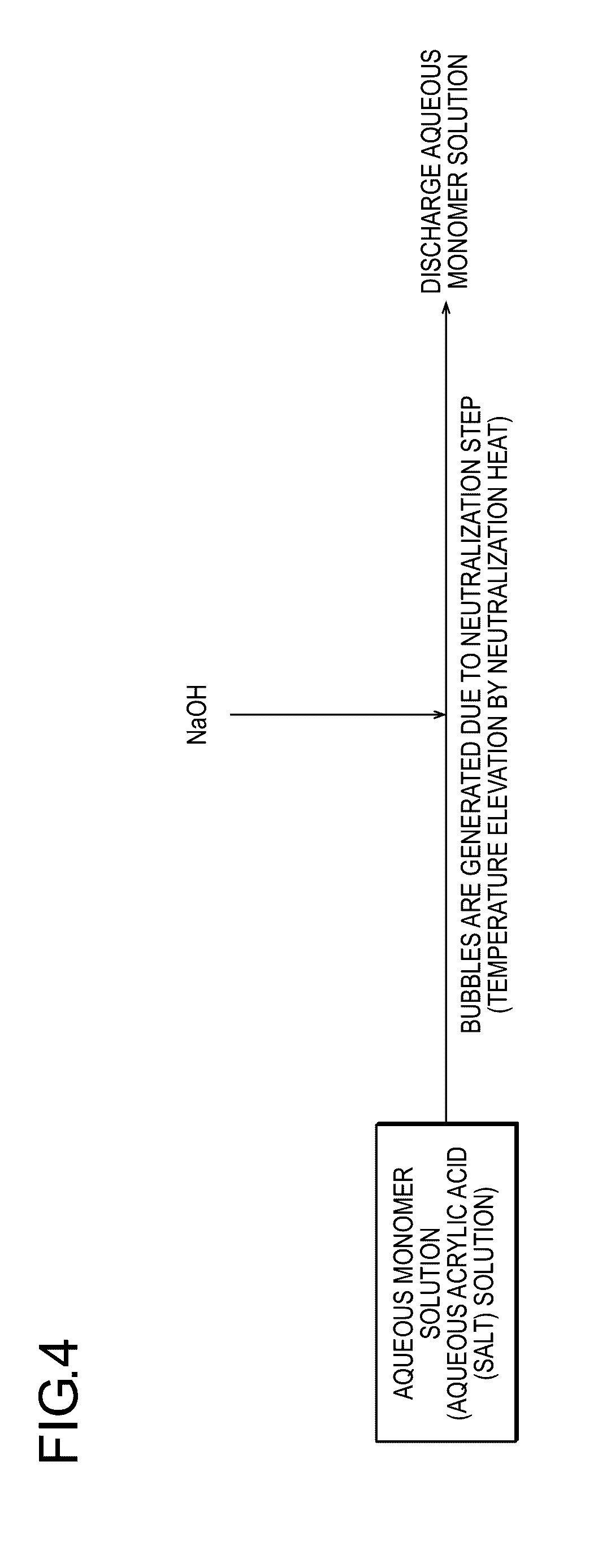Poly(Meth)Acrylic Acid (Salt)-Based Particulate Absorbent, and Production Method
a technology of acrylic acid and particulate absorbent, which is applied in the field of poly(meth)acrylic acid (salt)based particulate absorbent, can solve the problems of deterioration of handleability, insufficient effect, and urine leakage or skin rash, so as to improve performance, less trouble, and increase the demand for disposable diapers
- Summary
- Abstract
- Description
- Claims
- Application Information
AI Technical Summary
Benefits of technology
Problems solved by technology
Method used
Image
Examples
production example 1
Production Example of Water-Absorbing Resin in the Form Other than Foamed Polymer
[0395]By dissolving 4.4 parts by weight of polyethylene glycol diacrylate (n=9) in 5500 parts by weight of 38% by weight of aqueous sodium acrylate (rate of neutralization: 75 mol %) solution, an aqueous monomer solution was obtained. Subsequently, the reaction liquid was degassed for 30 minutes under a nitrogen gas atmosphere. Subsequently, this reaction liquid was supplied to a jacketed stainless steel twin-arm kneader with an openable lid and two sigma type blades, and the system was replaced with nitrogen gas while the reaction liquid was kept at 30° C. Subsequently, while the reaction liquid was stirred, 2.8 parts by weight of sodium persulfate and 0.12 parts by weight of L-ascorbic acid were added. After about 1 minute, polymerization was initiated. Polymerization was performed at 30 to 90° C., and a hydrogel-forming crosslinked polymer was taken out 60 minutes after the initiation of the polymeri...
production example 2
Production Example (1) of Water-Absorbing Resin in the Form of Foamed Polymer
[0397]Into a 2 liter polypropylene container, 422.0 g of acrylic acid, 1.38 g of polyethylene glycol diacrylate (molecular weight 523) as an internal crosslinking agent, 5.68 g of 2% by weight of aqueous trisodium diethylenetriamine pentaacetate solution, 173.9 g of 48.5% by weight of aqueous sodium hydroxide solution, 4.39 g of 1.0% by weight of aqueous polyoxyethylene (20) sorbitan monostearate (manufactured by Kao Corporation) solution as a surfactant, and 401.27 g of deionized water (ion-exchanged water) were added and dissolved (mixed) to prepare an aqueous monomer solution (1′). The temperature of the aqueous monomer solution (1′) rose to 65° C. due to neutralization heat in the first stage immediately after preparation. Since the solubility of a gas was lowered due to the rise in the temperature, the appearance of the aqueous monomer solution (1′) containing the surfactant was cloudy due to the intro...
production example 3
Production Example (2) of Water-Absorbing Resin in the Form of Foamed Polymer
[0402]The same reaction and operation as the Production Example 2 was performed except that the amount of polyethylene glycol diacrylate was changed from 1.38 g to 0.67 g in the Production Example 2 to obtain water-absorbing resin particles (C) corresponding to the water-absorbing resin particles (B). Furthermore, from the water-absorbing resin particles (C), foamed water-absorbing resin particles (C1) as a fraction which had passed through the wire mesh of 850 μm but had not passed through the wire mesh of 150 μm and water-absorbing resin fine particles (C2) as a fraction which had passed through the wire mesh of 150 μm were obtained. At this time, the ratio of particles having a particle diameter of less than 150 μm in the water-absorbing resin particles (C) was 11.5% by weight. The ratio of particles having a particle diameter of less than 150 μm in the water-absorbing resin particles (C1) obtained by th...
PUM
| Property | Measurement | Unit |
|---|---|---|
| weight average particle diameter | aaaaa | aaaaa |
| surface tension | aaaaa | aaaaa |
| water absorption time | aaaaa | aaaaa |
Abstract
Description
Claims
Application Information
 Login to View More
Login to View More - R&D
- Intellectual Property
- Life Sciences
- Materials
- Tech Scout
- Unparalleled Data Quality
- Higher Quality Content
- 60% Fewer Hallucinations
Browse by: Latest US Patents, China's latest patents, Technical Efficacy Thesaurus, Application Domain, Technology Topic, Popular Technical Reports.
© 2025 PatSnap. All rights reserved.Legal|Privacy policy|Modern Slavery Act Transparency Statement|Sitemap|About US| Contact US: help@patsnap.com



